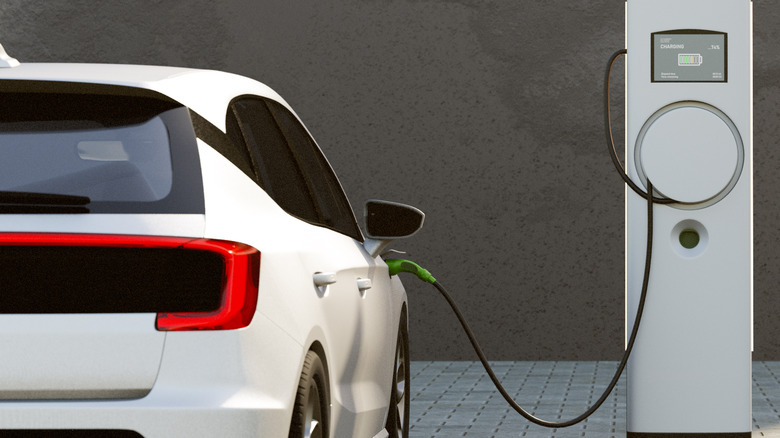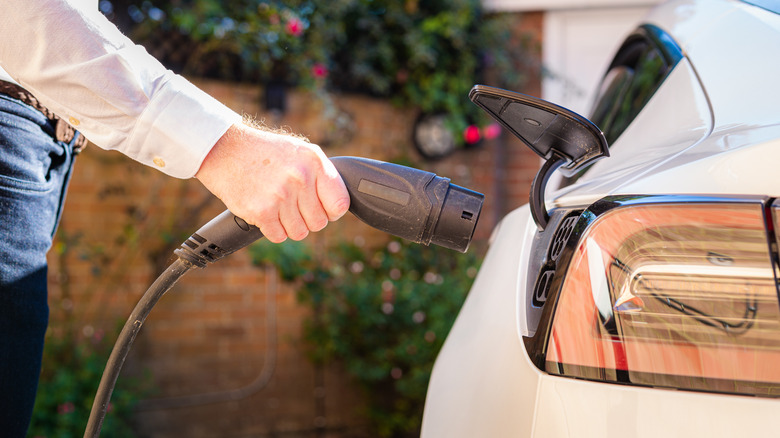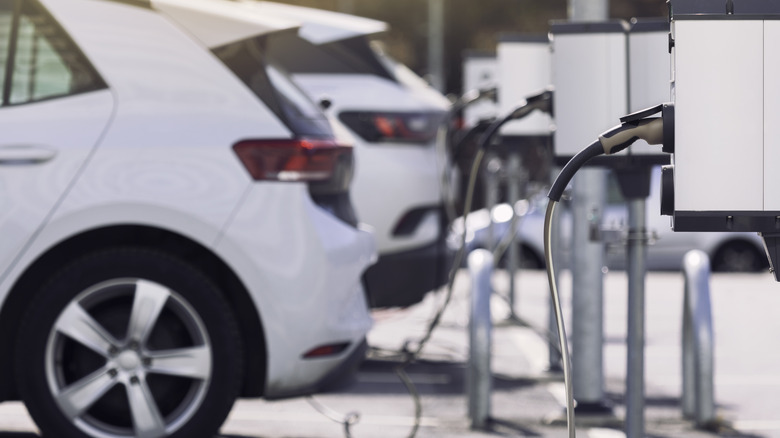Why Electric Vehicles Are Such A Tough Sell In Rural Areas
There are stark differences between urban and rural life. Those in big cities are familiar with the hustle and bustle of the so-called rat race, while those in quieter areas must become accustomed to the opposite. Quite often, services and stores are as densely packed as the population. After all, businesses naturally want to be where the money is, and that tends to be where the crowds are.
What does this mean for the future of electric cars? It means that the more specialized services (and servicing) they'll require will probably be, accordingly, harder to find for those who live in rural areas.
There seem to be two primary factors that work against the success of electric vehicles in such places: the organizational headache of providing the necessary infrastructure for drivers and the fact that many of those drivers will simply be unwilling to make the change with the kinds of journeys they tend to make.
The charging conundrum
Though electronic devices are generally designed with convenience and portability in mind, they'll still inevitably spend a good deal of their lifespans tied to a charging device. With electric vehicles, the same is true. Energy.gov notes that EVs are equipped with the capacity to be charged from a 110-volt socket at home by default, where it's practical to do so, but it often won't be. This means that costly public units are needed, and these are more sparsely provided in rural regions.
The Alternative Fuels Data Center reports that there are 54,830 EV charging locations across the United States. California alone is home to 14,866 of them. This is the state with the most urban population, the United States Census Bureau notes, while Vermont, with the most rural population, boasts just 332 charging locations. While each location will offer multiple types of charging and, crucially, several ports with which to do so (there are a total of 844 ESVE charging ports in Vermont's case), it's clear that there's a huge gulf between rural and urban areas in terms of their EV coverage.
Lots of drivers, regardless of how densely populated or otherwise their home region may be, are reluctant to buy an EV because the need to plug in can be seen as restrictive. It's not just about the limited rural access to stations, though: it's also about the tendencies of rural and urban drivers.
Drivers' differing needs
The Center for American Progress report "Preparing Rural America for the Electric Vehicle Revolution" from Bilegt Baatar et al. highlights another factor that continues to compound the problem: the habits of rural drivers.
"Drivers in rural areas are more likely to own heavy- and medium-duty pickup trucks," the report notes. These are the sorts of vehicles that are not particularly conducive to travel on congested urban roads or known for their subtlety or energy efficiency. In addition to that, rural drivers tend to take longer journeys than urban drivers. The report included data from the 2017 National Household Travel Survey, which revealed that more than 60% of urban drivers' journeys peaked at 5+ miles traveled, while this number was just around 40% for rural drivers.
Though there are hurdles to overcome in ensuring the electric car movement grows in rural areas in particular, steps are being taken. In July 2022, the Environmental and Energy Study Institute reported that $2.5 billion from the Infrastructure Investment and Jobs Act would be "distributed as grants by the Federal Highway Association with a focus on rural, disadvantaged, and hard-to-reach communities."
Time will tell how much of an impact vehicle availability and infrastructure boosts have on the adoption of electric vehicles across the nation and beyond.


